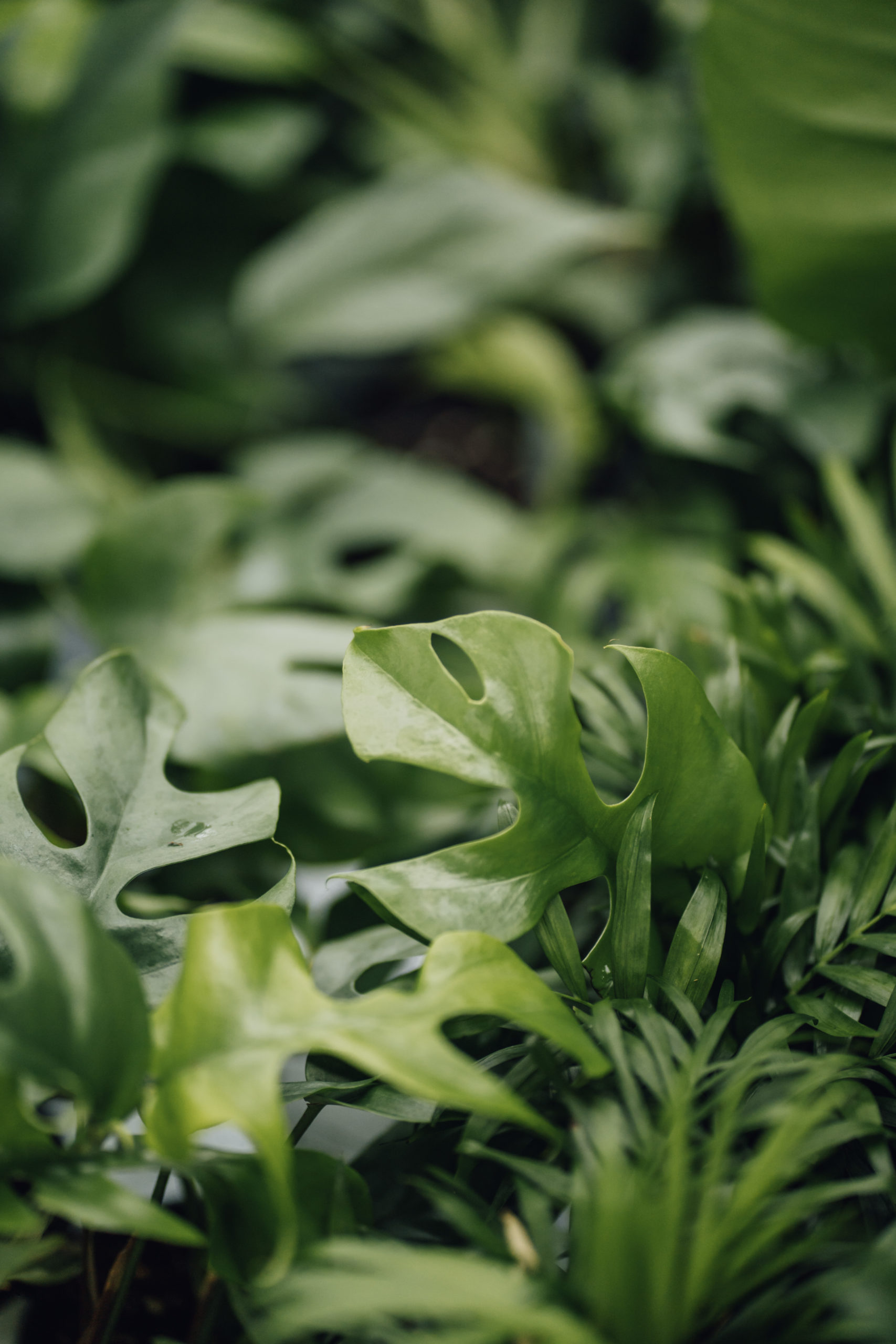Caring for Houseplants (How to Grow Thriving Plants Indoors!)
Not exactly a green thumb? Caring for houseplants just takes a bit of knowledge, love, and effort. Adding greenery to your home brightens your mood, reduces stress, and encourages a sense of calm. Being around plants lowers our cortisol levels and causes our bodies to release dopamine and serotonin.
They are beautiful to look at and good for you too! With a few tips to set you up for success, you can learn to grow thriving plants indoors.
Each plant has its own requirements – from how much light they need to how often they want fertilizer. Get to know your plants and set them up in their perfect environment. The key to success (indoors or out) is putting the right plant in the right spot.

Caring for Houseplants – Frankie’s 6 Steps to Success
Start with a healthy plant.
Set yourself up for success from day one. Buying plants from a reliable, quality source dramatically increases your chances of growing beautiful, lush plants.
Look for deep green leaves with no holes or browning. Head to Home Depot, Walmart, or your favourite garden store, where you’ll find many varieties grown in Miami (North America’s number one source for tropical plants).
Water regularly and shower occasionally!
Regular watering and excellent drainage are essential. One of the biggest reasons indoor plants die is too much water. Does this sound familiar? You notice a yellow leaf or unhappy plant, so you run to the sink and add water. You assume the plant is dry when it actually has too much water. Houseplants don’t like wet feet and shouldn’t be sitting in water.
Keep an eye on them and add water only when the top inch of soil has dried out. And if you notice dust on the leaves, pop them in the tub for a quick shower.
Give them space.
Plants need space to grow. If you notice foliage looks yellow, the plant dries out more frequently or looks like it’s struggling, try moving it up to a bigger pot.
Plants respond better to repotting in the spring when they are actively growing. This also means you can take it outside, making less mess in the house. (win/win!)
Before repotting, look for instructions on the specific variety. Some plants, such as Jade, don’t like to be repotted; they want their feet in tight shoes.
Don’t forget the fertilizer.
Fertilizing can be done in the growing months (late spring through fall) weekly or bi-weekly. Your indoor plants don’t have the luxury of an entire garden full of nutrients, so you want to feed them regularly.
Link: Try Scott’s Liquid House Plant Food.
Find the Perfect Spot
Give your plants the perfect Cinderella spot in your home – not too hot or cold, but just right! Putting them too close to a window can mean too much light in summer and a chilly breeze in winter. It’s best to keep the temperature as consistent as possible.
Let there be light!
Nothing grows well in the dark (except mushrooms), so ensure your plants have adequate light. Some will tolerate lower light, while others want their faces in the sun all day.
If you have a north or east-facing window, look for plants that will grow in low to medium light. Large west or south-facing windows will provide medium to bright light for the sun-lovers. And if you need to brighten things up, full-spectrum grow lights will do the trick.
Frankie’s favourite easy to care for indoor plants:
For low-light areas such as basement apartments with few windows: Chinese Evergreen (Aglaonema)
For kids: Spider plants (Chlorophytum comosum)
For bright spots: Aloe Vera (This drought-tolerant succulent can be used for topical healing and improve digestion).
A great “I can’t kill it” plant: the ZZ plant (Zamioculcas Zamifolia)
Caring for your indoor plants doesn’t have to be a struggle! You can grow beautiful flowers in your home. Choose the right plants and follow these tips to set you up for success.
If you have questions, join me Sunday morning on Facebook or YouTube. I’m happy to help!
